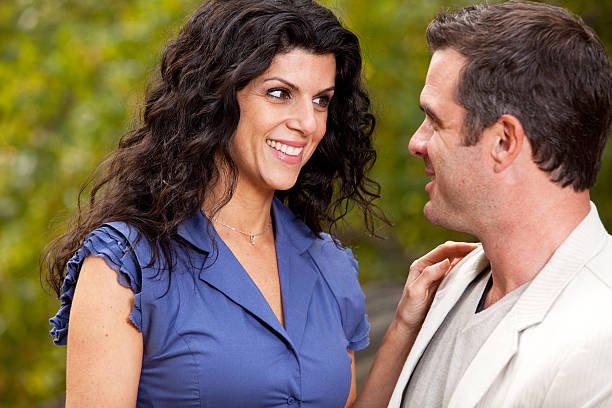How to Reassure Your Partner to Build Emotional Security?
Learn how to reassure your partner with genuine words, actions, and emotional support that build trust, deepen connection, and strengthen your relationship over time.

In every relationship, reassurance is like emotional oxygen—invisible yet essential. When two people love each other, doubts, fears, and insecurities still find their way in. Even in the strongest relationships, moments arise when one partner feels uncertain about the other’s feelings or the future. Learning how to reassure your partner isn’t just about comforting them in the moment; it’s about creating a foundation of emotional safety that strengthens love over time.
Relationships thrive not on perfection but on understanding. Every person carries emotional baggage—past heartbreaks, attachment wounds, or self-doubt that shapes how they respond to love. Reassurance acts as a bridge between two imperfect people who choose to stay connected despite fear. Whether your partner struggles with trust, confidence, or anxiety, how you respond can either heal or deepen the gap.
Let’s explore the psychology behind reassurance, practical ways to express it, and how to build a relationship where both partners feel emotionally secure and valued.

Understanding Why Reassurance Matters
At its core, reassurance isn’t about fixing your partner’s emotions—it’s about validating them. When someone says, “I just need to know you love me,” they aren’t being needy; they’re seeking connection. They’re asking, “Am I still safe with you?”
Human beings are wired for attachment. From infancy, we seek comfort and consistency in order to feel secure. In adulthood, that need doesn’t disappear—it just takes a new form. When reassurance is absent, insecurities grow louder. A lack of emotional reassurance can trigger anxiety, overthinking, jealousy, or withdrawal.
Reassurance matters because it quiets those inner doubts. It signals, “I see you. I’m here. You’re important to me.” This message, when delivered consistently, builds trust—the emotional glue that holds relationships together during conflict, distance, and change.

Emotional Triggers That Create the Need for Reassurance
Not everyone requires reassurance for the same reasons. Some people need it due to past betrayals or neglect, while others crave it because of personality differences or attachment style. Recognizing what fuels your partner’s insecurity can make your reassurance more genuine and effective.
A partner with an anxious attachment style may need verbal affirmation more frequently. They might fear emotional abandonment or assume that silence means disinterest. In contrast, someone with an avoidant attachment style might resist reassurance but still crave emotional safety deep down.
Sometimes, reassurance becomes necessary during specific circumstances—after an argument, during stressful periods, or when one partner feels overlooked. For instance, if your partner just lost their job, had a conflict with family, or is struggling with self-esteem, your emotional steadiness can anchor them through uncertainty.

The Role of Communication in Reassurance
You can’t reassure your partner effectively if communication between you is shallow or defensive. Honest communication is the foundation of reassurance because it makes vulnerability safe. When your partner shares a fear or insecurity, listen—not to respond, but to understand.
Saying things like, “You shouldn’t feel that way,” or “You’re overreacting,” invalidates emotions and creates distance. Instead, practice empathic listening—respond with warmth and understanding. For example, “I can see that this made you feel insecure. I love you, and I want us to feel secure together.”
Reassurance thrives in open dialogue. When you express love clearly and listen deeply, your partner feels seen—and that recognition is often the most powerful reassurance of all.

How to Reassure Your Partner Emotionally?
Reassurance isn’t only about grand gestures or endless verbal affirmations. It’s found in consistency—the small, daily acts that tell your partner, “You matter.” Here’s how to nurture emotional reassurance in your relationship:
First, express affection openly. Touch, tone, and tenderness communicate more than words ever can. Holding hands, hugging, or making eye contact while speaking all reinforce connection. Physical presence tells your partner you’re emotionally available.
Second, use reassuring language. Simple phrases like “I love you,” “I’m proud of you,” or “I’m not going anywhere” carry immense power when said sincerely. It’s not about repetition; it’s about intention. When your words match your actions, trust deepens.
Third, follow through on promises. Nothing undermines reassurance faster than inconsistency. If you promise to be somewhere, do it. If you say you’ll call, call. Reliability transforms words into truth.
Fourth, validate your partner’s emotions. You don’t need to agree with everything they feel, but you can still acknowledge it. Saying, “I understand why that made you feel hurt,” shows emotional maturity and empathy.
Finally, be patient. Insecure moments often come from wounds that predate your relationship. Healing takes time. Your steady presence—not pressure—is what helps rebuild their confidence in love.

Reassuring After Conflict
After arguments, reassurance becomes even more crucial. Conflict creates emotional distance, and without repair, it breeds resentment. The goal isn’t to win but to restore safety.
Start by acknowledging your part. Even if you didn’t intend harm, validating your partner’s emotions helps lower defenses. Statements like, “I didn’t mean to make you feel unheard. I care about your feelings,” invite connection instead of blame.
Physical closeness after conflict—a hug, a gentle touch, or simply sitting together—helps re-establish emotional intimacy. However, don’t rush forgiveness. Let your partner express their hurt fully. Once they feel understood, your reassurance will carry more weight.
It’s also important to reframe conflict as growth rather than proof of incompatibility. When couples handle disagreements with empathy and accountability, they emerge stronger and more emotionally aligned.

Reassurance in Long-Distance Relationships
Distance magnifies insecurity. Without daily physical closeness, reassurance becomes intentional rather than spontaneous. In long-distance relationships, communication is your strongest tool.
Regular check-ins, video calls, and genuine conversations help maintain intimacy. Express appreciation often—say what you love about your partner, what you miss, and what you’re looking forward to. Avoid vague texts like “I’m busy”; instead, share meaningful updates that keep them included in your life.
Transparency builds trust across miles. Share your routine, introduce them to friends virtually, and keep your commitments consistent. When distance creates doubt, reassurance becomes the anchor that keeps both hearts connected.

The Difference Between Healthy and Unhealthy Reassurance
It’s important to note that reassurance can become unhealthy when it turns into dependency. Constantly seeking or giving reassurance to soothe extreme anxiety can drain both partners emotionally.
Healthy reassurance empowers your partner to feel secure; unhealthy reassurance enables avoidance of deeper issues. The goal is not to erase every doubt but to create enough emotional safety for honest dialogue.
If your partner frequently seeks reassurance in patterns that seem excessive or rooted in trauma, therapy can help. Professional guidance provides tools to balance reassurance with self-soothing skills, ensuring both partners feel supported without codependency.

Reassurance Through Actions, Not Just Words
Love must be shown, not just spoken. Your daily behavior often communicates reassurance more effectively than words. Actions such as remembering special dates, supporting their goals, or showing up when they need you carry more weight than mere words of love.
Be emotionally predictable. Emotional inconsistency—being warm one day and distant the next—breeds anxiety. When your moods and affection fluctuate dramatically, your partner starts doubting where they stand.
Respect boundaries, too. Reassurance doesn’t mean smothering or controlling. Giving your partner space when needed shows maturity and trust—another subtle but powerful form of reassurance.

Reassurance After Betrayal or Broken Trust
When betrayal or dishonesty enters a relationship, reassurance becomes a long and delicate process. It’s not about saying the right things but proving reliability over time. If you’re the one who broke trust, transparency and accountability are essential.
Start with sincere remorse. Avoid minimizing or deflecting responsibility. Instead, validate your partner’s pain and give them space to process it. Reassurance after betrayal is about consistency—showing up every day, being honest, and allowing time to rebuild what was broken.
For the partner learning to trust again, reassurance might mean setting clear boundaries and expectations. Healing after betrayal doesn’t mean blind forgiveness; it means creating new patterns that restore emotional safety.
Both partners must understand that true reassurance isn’t instant—it’s a daily commitment to honesty, empathy, and emotional repair.

Building Long-Term Emotional Security
When reassurance becomes part of your relationship culture, it fosters long-term emotional security. You stop walking on eggshells and start walking in trust. A secure relationship doesn’t mean the absence of fear; it means both partners know how to handle fear together.
To sustain reassurance, keep communication open and intentional. Revisit emotional needs periodically—what made your partner feel loved two years ago might not be the same today. Continual curiosity about each other’s emotional world keeps intimacy alive.
Mutual reassurance is the ultimate goal—when both partners actively nurture safety for each other. It’s not a one-way effort but a shared practice that builds resilience, empathy, and enduring connection.

Conclusion
Learning how to reassure your partner is learning how to love with awareness. It’s not about fixing insecurities or pretending everything is perfect—it’s about meeting vulnerability with compassion. Reassurance says, “I see your fears, and I’m not leaving because of them.”
In every strong relationship, reassurance weaves a thread of emotional safety through every challenge, mistake, and misunderstanding. It turns uncertainty into closeness, fear into trust, and love into something deeper—something that lasts.
When you choose to reassure your partner, you’re calming their mind, and you’re feeding their heart. You’re reminding them that love is not only a feeling but a promise—a promise that no matter how loud the world becomes, you’ll keep showing up with gentleness, truth, and unwavering presence.
Because at the end of the day, reassurance isn’t about words—it’s about proof that you care, again and again.
Share
What's Your Reaction?
 Like
0
Like
0
 Dislike
0
Dislike
0
 Love
0
Love
0
 Funny
0
Funny
0
 Angry
0
Angry
0
 Sad
0
Sad
0
 Wow
0
Wow
0














